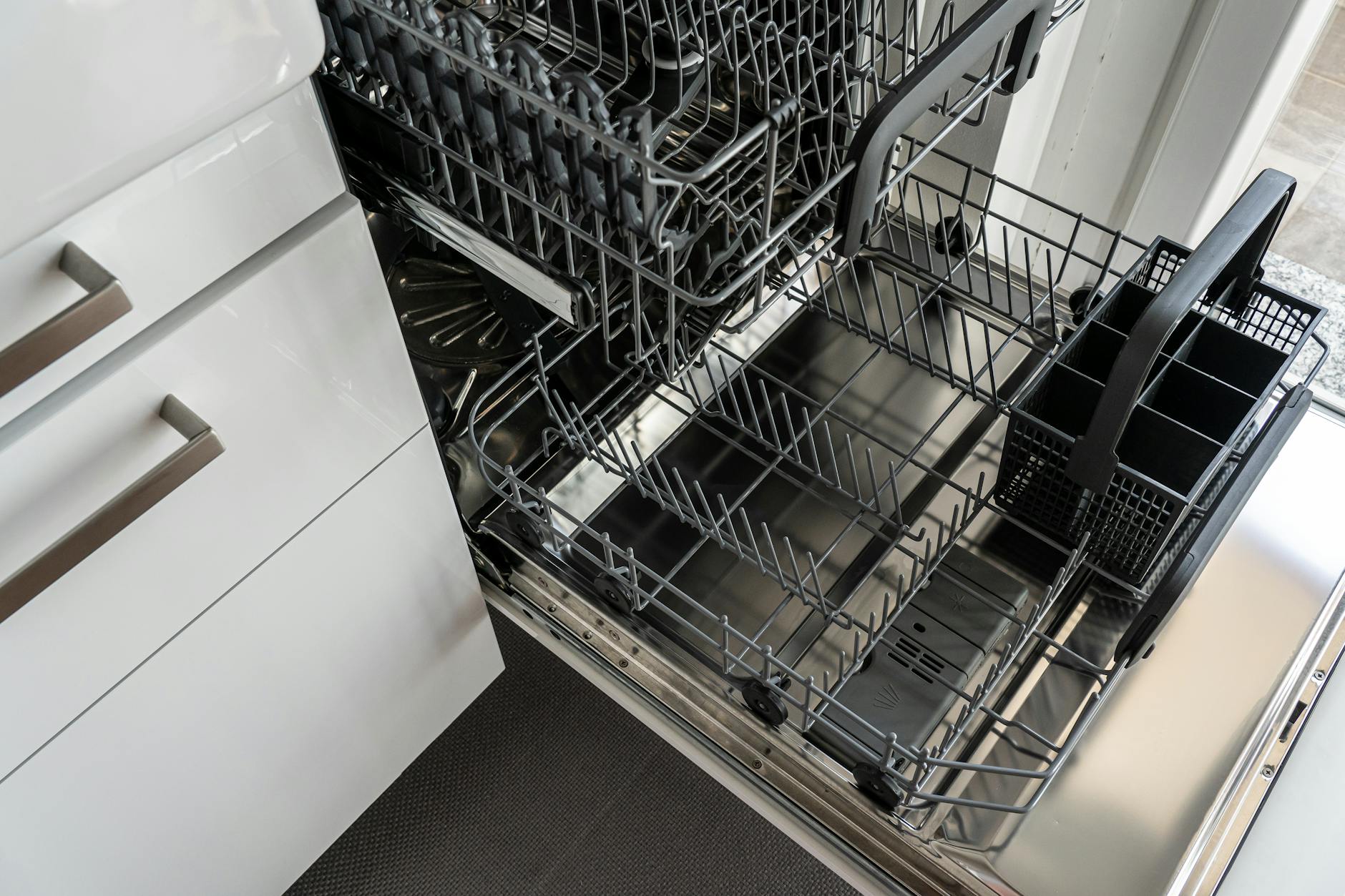Dishwashers get dirty for several reasons, despite their primary function of cleaning. Here are some common causes:
1. Food Residue Buildup
Leftover food particles from dishes can accumulate in various parts of the dishwasher, including the filter, spray arms, and drain. These particles can create blockages and harbor bacteria, leading to unpleasant odors and decreased cleaning efficiency.
2. Grease and Oil Residue
Grease and oil from dishes can build up over time, especially if the dishwasher is not run at a high temperature regularly. This residue can stick to the walls, racks, and internal components, making the dishwasher appear dirty and affecting its performance.
3. Hard Water Deposits
Hard water contains high levels of minerals like calcium and magnesium, which can leave deposits inside the dishwasher. These mineral deposits can build up on the heating element, spray arms, and other components, leading to white spots and reduced cleaning effectiveness. According to the U.S. Geological Survey, over 85% of the water in the United States is hard water.
4. Mold and Mildew Growth
The combination of food particles, moisture, and warmth creates an ideal environment for mold and mildew growth. These fungi can develop on rubber seals, in the filter, and other damp areas, contributing to foul smells and potential health hazards. The Centers for Disease Control and Prevention notes that mold can grow within 24-48 hours in moist environments.
5. Detergent Residue
Using too much detergent or using a detergent that is not compatible with your dishwasher can leave a soapy residue inside the machine. This residue can attract dirt and grime, making the dishwasher dirtier over time.
Preventative Measures
To keep your dishwasher clean, consider the following tips:
- Rinse Dishes Before Loading: Scrape off large food particles before placing dishes in the dishwasher.
- Run Hot Water Cycles: Use high-temperature cycles periodically to break down grease and kill bacteria.
- Use Dishwasher Cleaner: Regularly use a dishwasher cleaner to remove grease, limescale, and detergent buildup.
- Clean Filters and Seals: Regularly inspect and clean the dishwasher’s filters, spray arms, and seals to prevent buildup and blockages.
By understanding these common causes and taking preventive measures, you can maintain a cleaner and more efficient dishwasher. For more detailed tips on cleaning and maintaining your dishwasher, visit Consumer Reports and Good Housekeeping.
How to clean the dishwasher?
Step 1: Prepare for Cleaning
Begin by removing the cutlery basket and the lower dish rack. This allows you to access all areas inside the dishwasher without any obstructions.
Step 2: Clean the Spray Arms
With an empty dishwasher, remove the spray arms. Typically, they can be detached by turning them or using a click mechanism. If the nozzles are blocked, use a thin, pointed tool like a toothpick to remove any debris, or rinse them under running water. Some spray arms can be opened for easier cleaning.
Step 3: Clean the Filter and Sieve
The filter and sieve are usually located at the bottom center of the dishwasher. Unscrew and remove them, then clean with a dishwashing brush and some detergent.
Step 4: Clean Seals, Joints, and the Door
Dirt and moisture tend to accumulate on rubber seals, joints, and door edges, creating a breeding ground for mold and bacteria. Clean these areas using a vinegar solution and a soft cloth to prevent mold growth.
Step 5: Run an Intensive Cleaning Cycle
After cleaning all removable parts, run the dishwasher on an intensive cycle (65-75 degrees Celsius) with a cleaning tab or powder. This helps to remove any remaining grime and sanitize the interior. For occasional deep cleaning, use a machine cleaner if the dishwasher is not used regularly.
Safe Household Cleaners for Dishwashers
Many traditional household products can be effective for cleaning dishwashers, but some need to be used with caution:
- Citric Acid: Effective for descaling but can form calcium citrate when heated, which is hard to dissolve. Use at temperatures below 40 degrees Celsius.
- Vinegar: Good for removing limescale but can damage hoses and seals over time. Use sparingly.
- Baking Soda: Safe and effective for eliminating odors and mild descaling. Spread two tablespoons on the bottom and run the dishwasher as usual.
Tackling Rust in the Dishwasher
Rust spots on cutlery often originate from other items in the dishwasher, like low-quality pots or a damaged cutlery basket. Solutions include:
- Identifying and hand-washing the offending items.
- Placing a crumpled piece of aluminum foil in the cutlery basket to bind the rust particles (note this can release aluminum into the water).
- Using chalk, a white cleaning stone, or common items like cola and citric acid to remove rust stains.
By following these steps and tips, you can keep your dishwasher clean and running efficiently.
